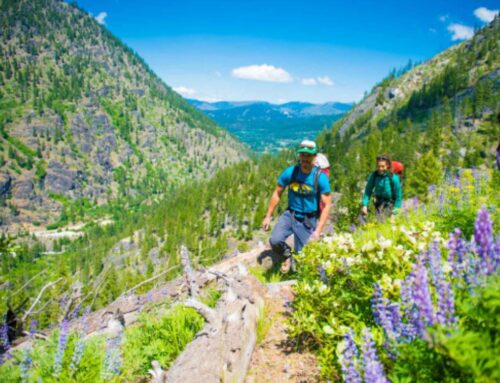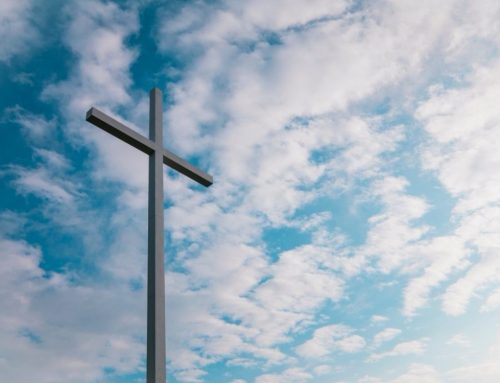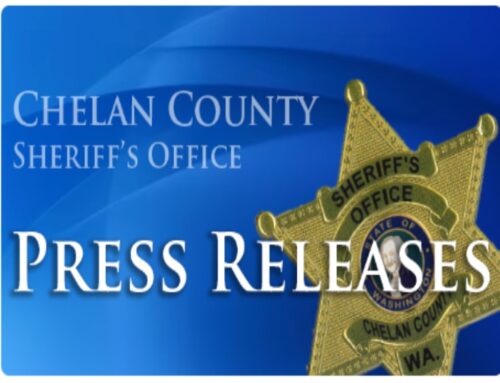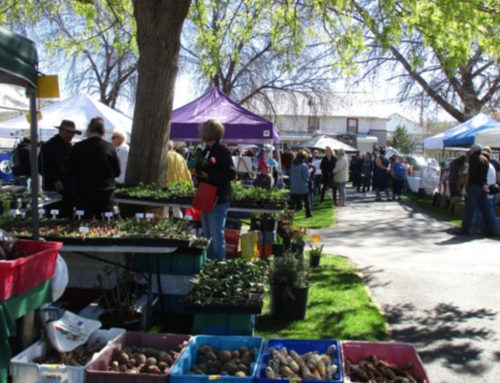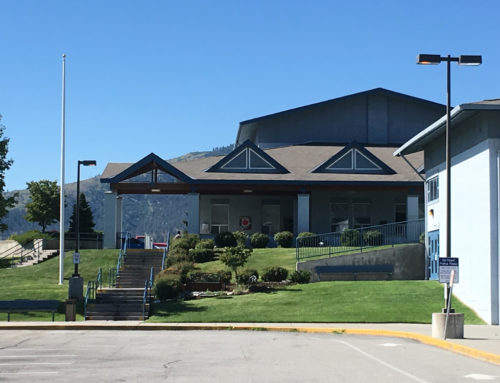A blog about wine, winemakers and wine travel
Originally published 12/24/23 by thewinewrite.com, republished with permission, featured image above from LCN
She was told it couldn’t be done. Judy Phelps didn’t listen.
After receiving a generous severance package from her pharmaceutical employer just after the turn of the century, Judy and husband Don began to muse about planting a vineyard near their Lake Chelan home. Judy was already a garage winemaker, after all. A vocational pivot into wine seemed natural. So called experts disagreed. They did not believe wine grapes could be successfully grown in Lake Chelan’s climate and terroir.
The Phelps family has helped prove the naysayers wrong. The Hard Row to Hoe Vineyards team is now growing a wide array of grape varieties on its twenty acres of estate vineyards in the Lake Chelan AVA. Don Phelps has led a commitment to farm organically and sustainably. The estate properties have earned LIVE and Salmon-Safe vineyard certifications. They’re good neighbors growing fruit the right way.
We visited Lake Chelan in July to sample wines at a number of wineries, including Hard Row to Hoe. The vistas there are breathtaking. While this winery’s name and back story is humorous, the wines are thoughtfully made and serious. We caught up recently with Julian Shaver, head winemaker and son of Judy and Don, to hear more about the winery and the Lake Chelan AVA.
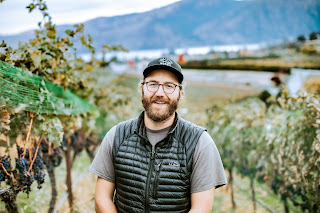 |
| Julian Shaver |
The Wise Write: Your parents were determined to plant wine grapes in Lake Chelan, despite some naysayers.
Julian: My mother was working as a statistical programmer for a pharmaceutical company. We moved to Washington when I was about ten years old. She worked remotely in the early 2000s from Lake Chelan. At some point her company offered her sort of a golden handshake. They were doing some layoffs, and offering good deals for people who wanted to retire early. So she did that.
Mom had been making wine at home in our garage by that time. When she got that retirement package, she decided to pursue something else. She took some U.C.-Davis courses for winemaking. Most of that was done online, but she did go to Davis for a couple of semesters to complete her schooling. Then she and Don bought an old orchard in Manson, Washington, and started planting grapes. Cabernet Franc was the first variety they planted. Our first harvest was just a family affair. It was me, my brother, and my parents.
I remember we had this old basket press. I recall pressing Syrah. I didn’t really know how the press worked. It had a jacket that went around the press, because it would press outwards. That’s one of my first memories of the winery. That was around 2005.
There were people who told my mom that she couldn’t grow grapes there. There was a lot of skepticism. I think that mindset has been a big hurdle that Lake Chelan has had to overcome. We’re still developing Lake Chelan’s reputation for growing wine grapes. At first we had people saying that we couldn’t grow grapes here. Many people thought there was no reason to grow them here. They thought we should just go buy fruit from vineyards south of us in the Columbia Valley. As more wineries started popping up in Lake Chelan, we started to hear people say that this is just a tourist location. Critics said that wineries were launching here simply for the foot traffic.
Through a lot of hard work we’ve shown merit for the premise that this is a great place to grow a wide variety of grapes. I’ll point out Pinot Noir as an example. Pinot Noir grown in Lake Chelan attracts a lot of scrutiny. Many people have yet to see its merits. There isn’t a lot of Pinot Noir grown in the Lake Chelan AVA, but for us and our neighbors, it’s been an incredible variety. It’s just yet to be discovered. Eventually it will make its way and not be denied the limelight. It’s just struggling to escape the stigma.
 |
| Don Phelps |
The Wine Write: Don Phelps was a champion of organic viticulture from the start.
Julian: He always has been. He grew up on a farm. His dad was a farmer. For years Don was a civil engineer. He still dabbles in civil engineering. I feel like our vineyard was a chance for him to return to his roots. I think he ultimately wanted to be a farmer.
Organic farming has always been a big deal for us. We love this valley. We want to grow grapes here in a way that is not detrimental to the valley in any way. Organic farming is a big part of that. We don’t see any reason to use synthetic fertilizers or pesticides. That’s been a tenet here.
We are also sustainably certified. We have LIVE certification. That stands for Low Impact Viticulture Enology. That takes our farming practices a step further. We are are Salmon-Safe. Before my mom was a programmer, she was a marine biologist. That’s what she studied in school. She’s an animal lover with a special interest in fish and sea life. Salmon that come up our rivers are a big part of Pacific Northwest life. Lake Chelan is a tributary of the massive Columbia River. We are conscious of everything downstream of us. We are very mindful of anything that goes into our water table.
The Wine Write: At what point did you think about working in wine?
Julian: Our family’s winery was coming to life when I was in grade school. When I was finishing high school, I just wanted to get out of Chelan. I really didn’t want anything to do with wine. I went to school on the west side of the state at the University of Washington. While I was there I began working in Woodinville tasting rooms, putting some of my wine knowledge to use. I worked at Pepper Bridge for awhile. I met someone who became a mentor for me, Chris Gorman. His tasting room was next to Pepper Bridge.
Chris had an intern opening one harvest. He asked me about helping them out. He knew I had experience driving a fork lift and running a wine pump. I knew the basics. I agreed to give it a shot. That’s when I fell in love with this work. I got a glimpse of wine production outside of the family business. I think that gave me a fresh pair of eyes. It opened up a vision for the industry as a whole. I stayed with Gorman for three years before working some harvests overseas in Australia and New Zealand. Then I came back and began working in the family business. It was quite a journey.
The Wine Write: Tell me the origins of the Hard Row to Hoe brand name.
Julian: The Lake Chelan AVA is highlighted by the glacially fed Lake Chelan. Today it attracts tourists, water sports lovers, and fishermen. It’s the focal point of our small community. About one hundred years ago, there was a large copper mine operated out of the north end of the lake. Lake Chelan is fifty-five miles long. The top two thirds of the lake extend out into wilderness. There are two remote towns on the northern end of the lake that are only accessible by boat. That’s true to this day. They were even less accessible a century ago.
One of the towns is called Lucerne. It was a mining town. There was a massive copper mine there. Miners were barged in to live and work. It was so remote that there was no place for them to spend their money. Where you find men making money, you will find opportunities for business. Some enterprising young women were running a brothel in Coulee City, servicing the workers completing the Grand Coulee dam. As that work was wrapping up, men were leaving. So was the brothel’s revenue stream. They needed a new place to set up shop. A girl’s got to eat, right?
They heard about the copper mine in Lucerne. They found an inn for sale in a nearby town. It sounded perfect. They bought the property sight unseen, only to find that the brothel was a few miles uplake of Lucerne. There was no easy way for the miners to get to Point Lovely, which was what they named their brothel. Back to the drawing board.
After meeting some locals, the women hired a young man in Chelan who had a rowboat. For fifteen cents round trip, he would row the miners across the lake to Point Lovely and back. So Hard Row to Hoe is a double entendre. It references the difficult farming conditions that we are in, the challenges inherent in farming sustainably, and gives a nod to this spicy bit of local history.
The Wine Write: You’ve got a really wide array of wines. Is that a testament to being able to grow a number of varieties well in the Lake Chelan AVA, or a reference to your curiosity about these wines?
Julian: It’s a combination of those things. We can grow a huge variety of grapes up here. We are fortunate as winemakers to be in that scenario. We can grow Bordeaux white varieties next to Rhône white varieties. Pinot Noir and Riesling grow well here. We can then make some amazing wines with that fruit. We are still a very young appellation. There has been a lot of experimentation here that is continuing. We are still getting a grasp on which varieties can be most successful.
As we figure out varieties, we are also establishing which wine styles showcase the vineyards best. We may be trying to see which style of Viognier shows this valley best. Should it be a stainless steel, light and fruity Viognier? Or should we go for something barrel aged that’s big, round, and higher in alcohol? These are questions that we ask ourselves individually and that we talk about as a wine community. Everyone in the valley grows a pretty nice array of varieties. It’s fun to work with all of that fruit. Every year we are doing something new. That’s exciting.
The Wine Write: It sounds like that style question is still evolving.
Julian: It is evolving. Let’s talk about Chardonnay as one example. Most people would agree that Chardonnay is a variety that does great in the Lake Chelan AVA. Which style of Chardonnay is best here? You’ll get varied responses to that question. We get enough heat here to allow a winery to make a pretty ripe, higher alcohol wine that would be barrel aged with some new oak. To me one of the most telling parts of this valley is our mineral soil. That soil was drug down here from British Columbia. I would argue that we should try to bring out that mineral quality in our Chardonnay. That styling is reminiscent of Chablis. We use neutral oak and stainless steel for that effect. That chalky minerality really shines through. It’s an elegant, less fruity Chardonnay that has worked well for us.
Chelan’s soils are different from the rest of the Columbia Valley. The Columbia Valley was part of the Missoula Flood plain. That resulted in pretty homogenized soils, layers from those flood events. Because of Lake Chelan’s altitude, we weren’t a part of the Missoula Flood. We are at about one thousand three hundred fifty feet above sea level. We have glacial soils that came down here from British Columbia. We have sand and gravel features here that you don’t see in the rest of the Columbia Valley. We were not a part of some of the major geological events of this region. We’re different here. Those differences present themselves in the minerality of our wine. I think those differences should be put at the forefront, especially for our white wines.
The Wine Write: Tell me about the Lake Chelan wine community.
Julian: It’s fantastic. We all want to see each other succeed. I guess there is some light competition. That’s the nature of the business. At the same time, people don’t come to visit a wine region if there’s only one good winery. We need as many good wineries as we can get. “The rising tide raises all ships” metaphor applies. It’s true. We all see that. We have a lot of camaraderie. We all talk and try to help one another improve. We all want to grow our AVA. That’s great for all of us. It’s a tight knit community. This is a small town. We work together quite frequently. We’re neighbors. I’m happy to be a part of all this.
The Wine Write: Why should wine lovers put Lake Chelan on their vacation lists?
Julian: As we discussed earlier, we grow so many varieties here. You can taste a huge number of varieties here. That includes wines grown in the valley and from other parts of Washington. Some wineries here feature fruit grown in other places. There may be a Cabernet Sauvignon from Red Mountain. Or a Yakima Valley Syrah. So just going from place to place will expose you to a lot of different wines. That’s exciting. And the backdrop in terms of scenery is simply beautiful.
The Wine Write: You guys have the hospitality end of the business down pat.
Julian: Hospitality is incredibly important. It’s all about creating an experience for people who visit us. We want to make sure our wines are presented properly. We want people to enjoy themselves. We have a great story at Hard Row to Hoe. We’ve literally painted it on the walls of the tasting room. We try really hard to make this an immersive experience. We want people to have a fun, entertaining time. Our visitors should feel welcomed. That’s what we are here to do. We want our guests to remember us fondly. Maybe they’ll join the wine club to get a reminder every quarter of just how much fun their visit was. So hospitality is huge. That’s the cornerstone of the business. We sell mostly through our tasting room.
The Wine Write: Is it your goal to make Hard Row to Hoe an estate winery at some point?
Julian: We are growing our estate vineyard every year. Our goal is to eventually be an estate winery. The demand for our wine has been growing faster than our ability to purchase land and plant more grapes. You are working several years ahead of yourself. It usually takes around four years from the planting to being able to make wine from those grapes.
We do source a few things now from outside the valley. This harvest we’ll only pull two lots from further south in the Columbia Valley. We are getting Primitivo. It’s amazing. That wine has a huge following within our customer base. We’ve worked with the Doebler family for that fruit. They primarily have apple and cherry orchards, but they have a vineyard on the corner of their property planted solely to this Primitivo. That’s a relationship we’ve had for about a decade. Primitivo loves really intense heat. The Wahluke Slope definitely provides that. You might be able to grow it here in Chelan, but in a cooler year it would really struggle.
We’ll also be getting a bit of Grenache this year. It comes out of a vineyard called Heron Bluff. We’ve worked with them for three or four years. I really like Grenache. We needed to add a little extra red wine to our portfolio, and this works.
In the past we got Cabernet Sauvignon from Red Mountain. We bought it for similar reasons. You could grow Cabernet in Chelan, but you’d battle to get it ripe in cooler years. Moving forward I expect to see less fruit purchases, though. I do not know if we’ll ever stop completely, but that Primitivo could be the only thing we pull from outside the Lake Chelan AVA soon.
The Wine Write: What’s the best way for my readers to purchase Hard Row to Hoe wines?
Julian: The best way is to order through our website. We produce a lot of different wines. We do a lot of smaller batches of some of those. That makes distribution difficult. We aren’t well distributed, especially outside of Washington State. We do ship to most states in the continental United States. If you like the wines, you can join the wine club. You get a discount on your quarterly shipments. You’ll get a package of three different wines each quarter in fun Hard Row to Hoe packaging. You’ll also get discounts on any additional wine you purchase, along with free wine tastings for yourself and three guests when you visit either our Chelan or Leavenworth tasting rooms. If you can’t come see us, ordering online is the best way to purchase.
The Wine Write: Harvest is within sight as we talk. What’s your outlook?
Julian: We are definitely getting there. I took some Pinot Noir samples yesterday, and we were just below twenty brix. As far as sugar development goes, that’s a little early. We normally pick Pinot Noir around September 25. It looks like we may be a week ahead of that this year. I think we are going to pick some Chardonnay for sparkling wine. We actually need to make that decision pretty soon. I would love to do a Méthode Champenoise. If we go ahead with that, we could be picking Chardonnay next week. Sauvignon Blanc won’t be far behind that. We usually get it the first week of September.
I’ll probably be out in the vineyard later today checking sugar levels. I’m about to get really busy.
What’s the old saw, “Idle hands are the devil’s workshop”? Not to worry about Julian Shaver and his team over the next several months. They’ll be busy doing work they love.
That love is focused on their home base, the Lake Chelan AVA. Hard Row to Hoe is one of several highly regarded wineries trumpeting the quality and potential of fruit grown on their home turf. As Julian mentioned, there is still a sense of exploration and discovery in the young appellation. Don’t you want to be part of the discovery process?
It’s not as hard as you may think. In a week you can explore Walla Walla, the Yakima Valley AVA, and Lake Chelan. Accommodations are easily found. The drives between places are easy. Just don’t get distracted by the scenery. There’s plenty of amber waves of grain and purple mountain majesty to be seen.
We can’t omit from this discussion the people of Eastern Washington. Lake Chelan was a particularly welcoming place. Julian was manning the tasting room himself on our visit. It is not at all out of the norm to chat with a winery owner or winemaker at your tasting stops. People in the industry here are eager to tell their stories and present their wines. Your eyes will be opened by the quality in those bottles.
We’re happy that Judy Phelps wouldn’t take “no” for an answer when she wanted to plant grape vines in Lake Chelan. It may have proved a hard row to hoe, but rarely is anything worth doing easy.















